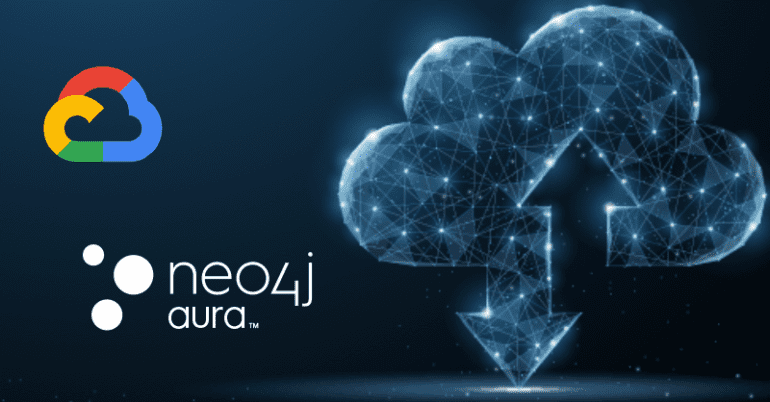TL;DR:
- Neo4j partners with Google Cloud’s Vertex AI to enhance AI-driven analyses.
- The integration enables the use of knowledge graphs for uncovering hidden relationships and patterns in vast data networks.
- Users can leverage natural language interaction to access and query knowledge graphs.
- Developers can process unstructured data and integrate it into knowledge graphs using Vertex AI’s generative AI capabilities.
- Neo4j’s graph database supports long-term memory and advanced analytics on knowledge graphs.
- The integration empowers businesses to create more value and impact with their data and LLMs.
- Real-time enrichments and post-processing enhance the accuracy and transparency of generative AI systems.
Main AI News:
Neo4j, a leading graph database and analytics company, has partnered with Google Cloud’s Vertex AI, the cutting-edge Large Language Model (LLM) platform, to provide organizations with enhanced capabilities in uncovering hidden relationships and patterns within vast data networks. By integrating Neo4j’s graph database expertise with Google Cloud’s generative AI features, users can now harness the power of knowledge graphs for insightful AI-driven analyses on Google Cloud Platform.
Knowledge graphs, created using Neo4j’s graph database and analytics capabilities, effectively capture intricate connections between entities. This function empowers AI systems to reason, infer, and retrieve relevant information, thereby yielding more accurate, transparent, and explainable outcomes for both Large Language Models (LLMs) and other generative AI systems.
The seamless integration of Neo4j with Google’s generative AI capabilities in Vertex AI introduces natural language interaction to knowledge graphs. Vertex AI’s generative AI features to facilitate a user-friendly interface by allowing enterprises to utilize natural language when interacting with the knowledge graph. By generating Cypher query language statements from user input, the system enables non-technical users to effortlessly access and query the database, even if they are unfamiliar with traditional database query languages.
Emil Eifrem, the co-founder and CEO of Neo4j, describes the partnership with Google as a convergence of graph technology and cloud computing excellence in the era of AI. Eifrem emphasizes that this collaboration empowers enterprises to leverage generative AI for innovation, delivering optimal outcomes for customers and unlocking the true potential of interconnected data at an unprecedented pace.
Developers can also leverage Vertex AI’s new generative AI capabilities to process unstructured data, structure it, and seamlessly integrate it into a knowledge graph. Once incorporated into the knowledge graph, users can extract valuable insights using Neo4j’s powerful data visualization and query tools, such as Bloom for business intelligence (BI) and Neo4j Graph Data Science.
Nenshad Bardoliwalla, Director of Product Management for Vertex AI at Google Cloud, recognizes the rapid data- and AI-driven transformations taking place in businesses today. He affirms that the integration between Neo4j and Vertex AI empowers businesses to create even more value and impact from their data and LLMs. With features like real-time enrichments, grounding, pattern identification in large datasets, and enhanced abilities for data exploration using natural language, organizations can unlock the true potential of their data and make informed decisions.
Neo4j databases now possess the capability to call Vertex AI services in real-time, enriching knowledge graphs and enhancing the generative model’s input. This enables the model to incorporate structured sources, such as knowledge graphs, providing the necessary context for accurate and guided processing. The response from the generative model can be further refined through post-processing for result verification, guard-railing, and augmentation with correctly generated semantic entities.
Moreover, Neo4j’s vector embeddings support long-term memory for Large Language Models (LLMs), enhancing their capabilities. Neo4j’s Graph Data Science offers an extensive array of over 60 algorithms, including efficient (approximate) nearest neighbor graphs and cosine similarity on embedding vectors. These algorithms enable similarity searches, facilitating advanced analyses on the knowledge graph.
With this powerful integration between Neo4j and Google Cloud’s Vertex AI, organizations can harness the full potential of generative AI and knowledge graphs, paving the way for unprecedented insights and informed decision-making.
Conclusion:
The integration between Neo4j and Google Cloud’s Vertex AI represents a significant development in the market. The collaboration combines the power of graph technology and cloud computing excellence, allowing organizations to unlock hidden insights and patterns within their data. By leveraging knowledge graphs and generative AI capabilities, businesses can make more informed decisions, improve customer outcomes, and innovate at an unprecedented speed. The seamless integration of natural language interaction and advanced analytics further democratizes data access and empowers non-technical users to explore and extract valuable insights. This integration signifies a powerful stride toward the future of AI-driven analytics and the realization of the true potential of interconnected data in the business landscape.

